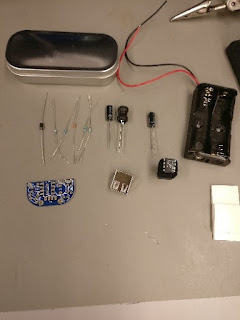Non-linear Circuit Am Demodulation

Ghost Talk: Mitigating EMI Signal Injection Attacks against Analog Sensors by Denis Foo Kune demonstrates the use of microphone as an AM receiver. I was curious how it was possible for circuits to unintentionally receive AM signals and demodulate it. The antenna theory that long wires which can resonate with the carrier frequency of RF wave was intuitive, but the circuits retrieving the envelope signal was mysterious to me. Through experiments, I found that when high frequency signals enter non-linear circuits such as diodes, PN transistors, op amps, and many amplifier circuits, the output will create harmonics of the input frequency. For instance, let’s look at an amplifier circuit below. This circuit has a gain of 10 and is biased at 2.5V virtual ground. Op amps usually operates linearly, but when the output signal reaches toward the supply voltage, the output will start to clip and show op amp’s non-linear property. To exaggerate the non-linear property, this circuit is desi




